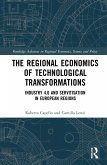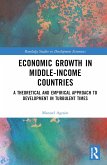The middle income trap refers to a state of economic development in which a country achieves a specific level of income and then remains there. According to the World Bank, a middle-income country is the one that has a gross national income (GNI) per capita of $1,000-12,000 (in 2011 prices). It is divided into the lower and upper middle-income group at around $4,000. Many countries such as Argentina, Brazil, Mexico, Russia, and South Africa have faced this situation of middle-income trap for a long time. Countries that have GNI corresponding to lower-middle income must achieve a minimum growth rate of 4.7% per annum to ensure that they do not fall into the lower middle-income trap. Similarly, countries that have GNI corresponding to upper middle-income must achieve a minimum growth rate of 3.5% per annum to ensure that they do not fall into the upper middle-income trap. For countries, the only way to avoid the middle-income trap is to grow rapidly. This book is a valuable compilation of researches on the subject of middle-income trap. It will prove to be immensely beneficial to students and researchers in this field.








